Bhutan is a Buddhist kingdom in the Himalayan region. It has beautiful scenic and sites. It is known for as one of the country that celebrates festivals in a colorful and vibrant way. Although not everyone know about Bhutanese cuisine. In this post, we will talk about some of the most famous Bhutanese meat dishes that will surely satisfy your taste buds.
Popular Bhutan Meat Dishes
Bhutan food is influenced by other cultures such as Nepal, Indian, Chinese and Tibetan food cultures. Therefore if you have had the chance to experience dining into those mentioned places, you’ll probably have an idea as to the type of meat dishes served in Bhutan.
Since Bhutanese locals loves to eat cheese, chili and spicy foods, you’ll noticed that most of the dishes in Bhutan have cheese and chillies as an ingredient. Also, you’ll probably hear more of the word Datshi, Shukam and Shakam when talking about Bhutanese dishes. Datshi in Bhutan means “Cheese”. Shakam refers to “Chillies” and Shukam in Bhutan simply means dried white chillies.
The cheese are generally made by fermenting the raw milk taken from animals such as cows and goats. Basically, Datshi is made as either hard or soft cheese. Chillies that are usually used are red dried chillies, while others prefer to use white chillies. The beef that Bhutanese people used is usually dried and preserved before it is used for cooking Bhutanese food.
Listed below are the most famous Bhutanese dishes. Read on to know more.
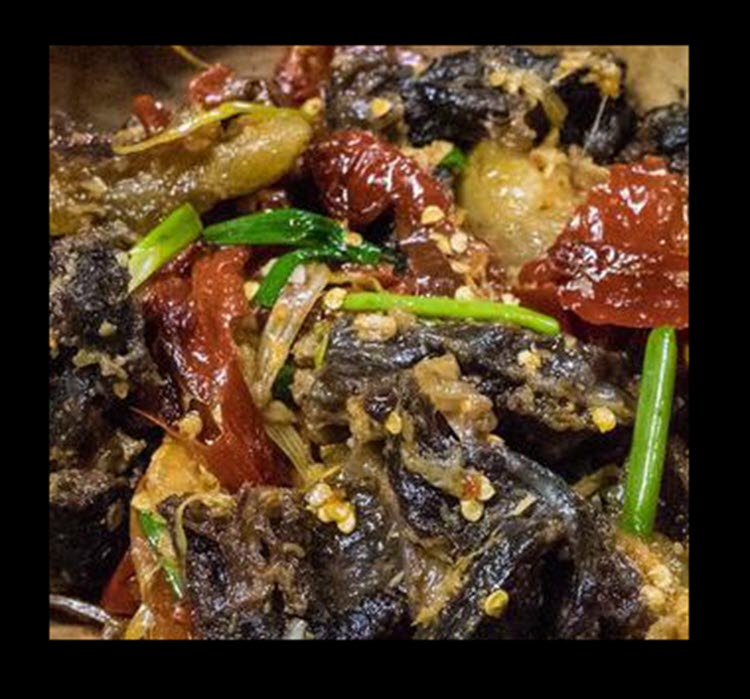
Shakam Ema Datshi
Shakam is a Bhutanese food that is made of dried Bhutanese beef, which is a famous meat in Bhutan. The dried beef is sliced into small-sized then simmered using butter and cheese. Though the beef used with Shakam Ema Datshi has a similar taste as that of a beef jerky, dried beef in Shakam Ema Datshi is more thicker.
The main ingredients used in making this dish are dried beef, onions, red chilies and Feta cheese.
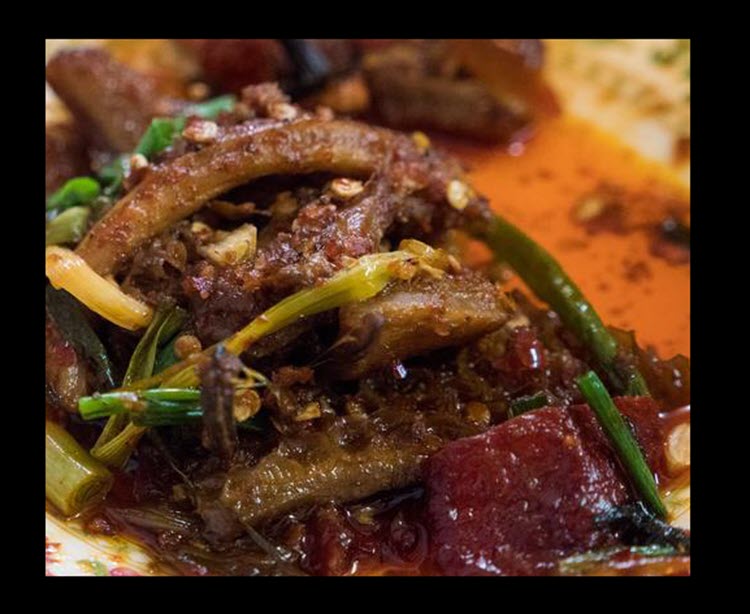
Shakam paa
Shakam Paa is a popular Bhutanese food. It is made from slices of dried beef that is cooked with dry chillies and radish. Potatoes and onions are added too.
The texture of the dried beef in this dish is somewhat chewy because of how it was dried and preserved.
The staple Bhutanese dish called Shakam Paa is usually cooked in a medium sized pot where the chillies are usually tossed in whole, which I guess is usually makes Bhutan food unique and interesting.
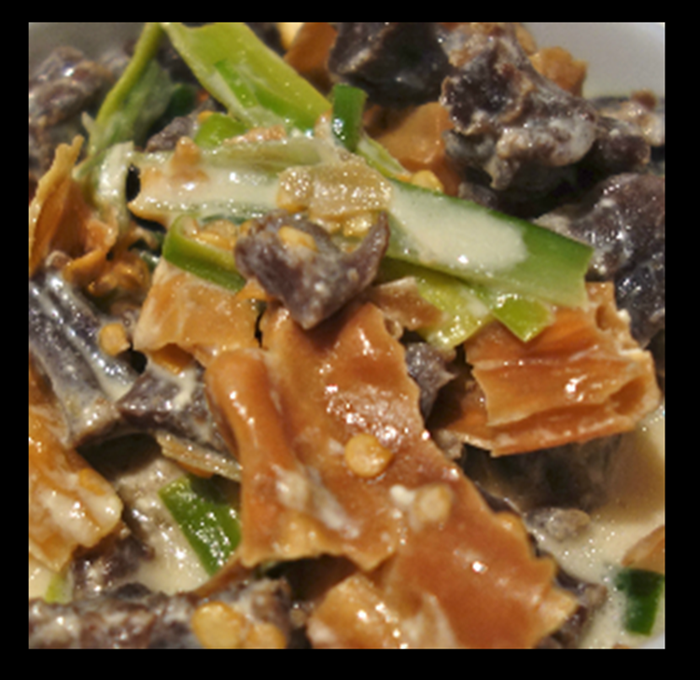
Shakam Shukam Datshi
Shakam Shukam Datshi is another Bhutanese food that is made from dried beef cut in bite-sized pieces cooked in cheese and then with white chillies. In Bhutan, Shukam is referred to as Dried White chillies. The white chillies adds to that sour and spicy taste of the dish.

Phaksha Paa
Phaksha Paa is one of the favorites of Bhutan’s, a meaty stew. It features one of Bhutan’s loved ingredient which is the Pork. Although Beef, pork and Yak meat are widely used meat in Bhutan.
Phaksha Paa dish is made of slices of pork that are stir fried. Whole red dry chillies are added to the dish making it a spicy dish. Most of the time, vegetables are also added to the mixture too and that includes Bok Choy or Pak Choy (White Mustard Cabbage) , mushrooms, spinach and radish.
This is a famous dish in Bhutan best eaten with rice and other Bhutan’s Datshi dishes.
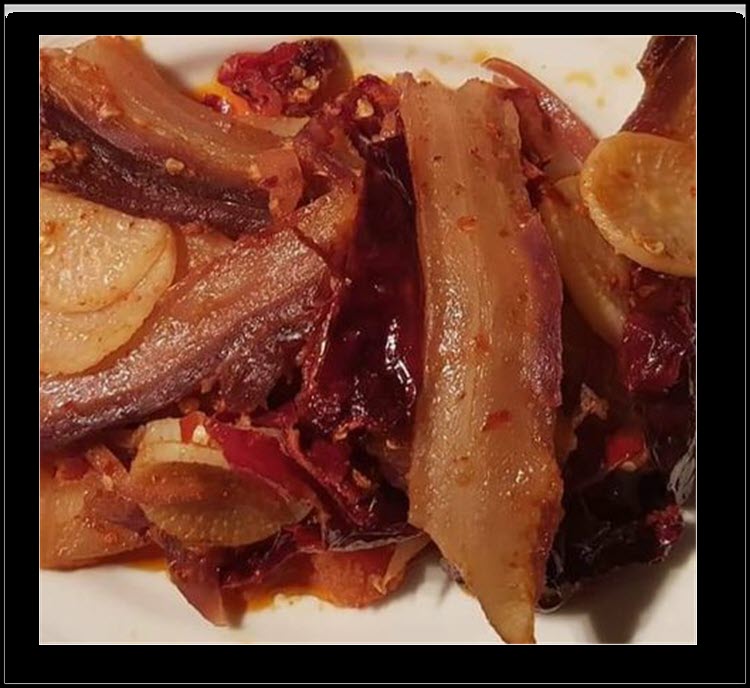
Sikam Paa
Sikam Paa is loved by Bhutanese people. Sikam is a dish that is made from pork belly. In this dish, the pork belly has been dried for a longer period of time under extreme heat from the sun then dried pork belly are then cut into strips.
To make Sikam Paa dish, the strands or strips of pork belly are fried. Additional ingredients are added such as garlic, onions and red chillies.
It is best eaten with rice especially Bhutanese red rice and soup.

Yaksha Shakam
Yaksha Shakam is different from the Bhutanese food mentioned above. If most of the dishes are made with pork or beef, Yaksha Shakam is made with dried yak meat. Yak meat is actually a lean and juicy red meat, although the taste is similar to that of beef.
With Yaksha Shakam, the yak meat is first dried to make it into a yak jerky then fried or cooked with fermented yak butter or fermented yak cheese.
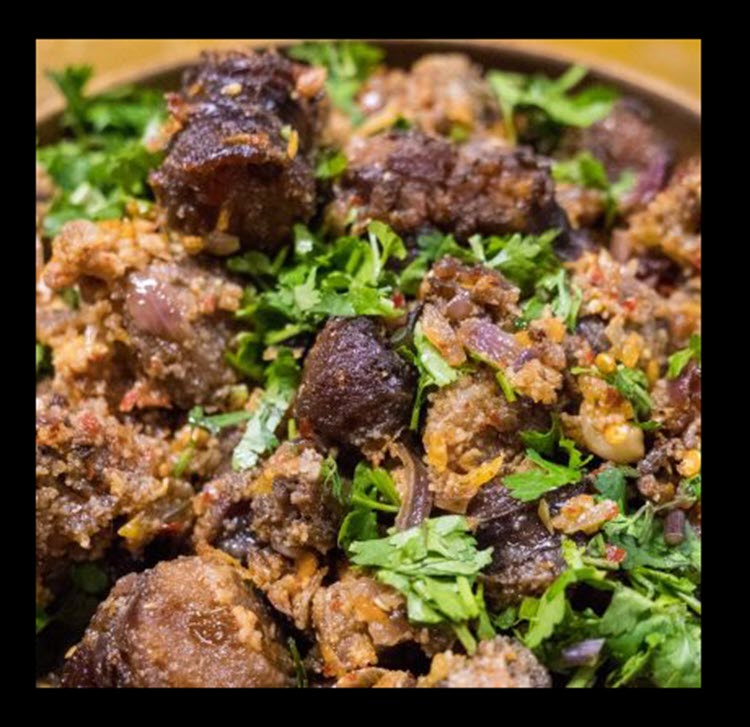
Juma
Juma is a type of Bhutanese sausage. A delicious and meaty sausage that is made with rice, minced meat and Bhutan spices, some prefer to use Sichuan Pepper for a citrus hint of flavor. All these are used to fill intestine wrappers.
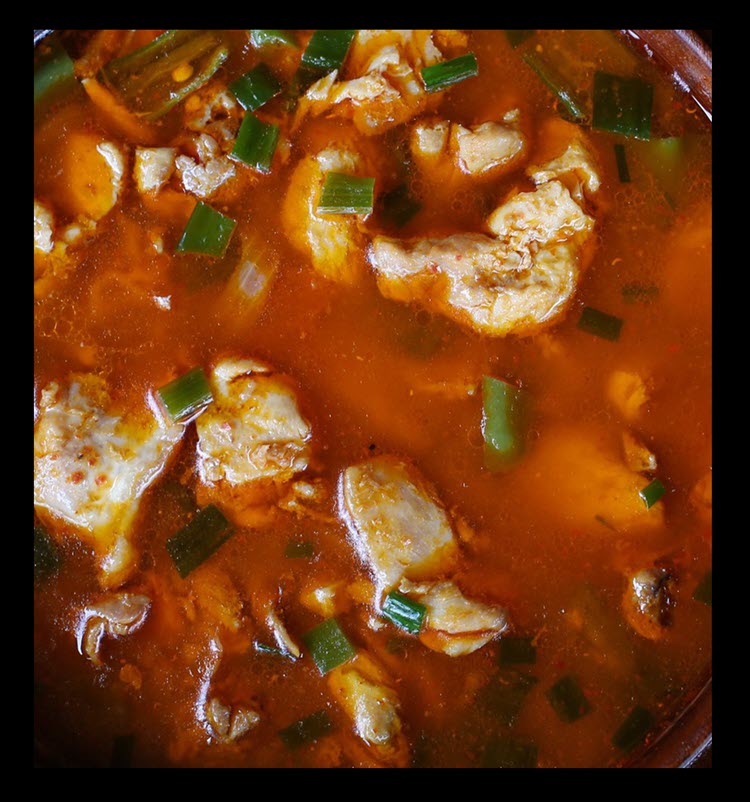
Jasha Maru
When visiting Bhutan, you must try this other Bhutanese food. This dish is a chicken stew or sometimes called Chicken curry in Bhutan.
Jasha Maru is made of chicken (diced), garlic, onions, tomato, ginger, chillies and coriander leaves. This dish has a mild spicy taste that you’ll surely love, but the taste and smell of ginger is what makes this dish unique.
Best served with red rice or other Bhutanese foods. Can also be served with chicken broth.
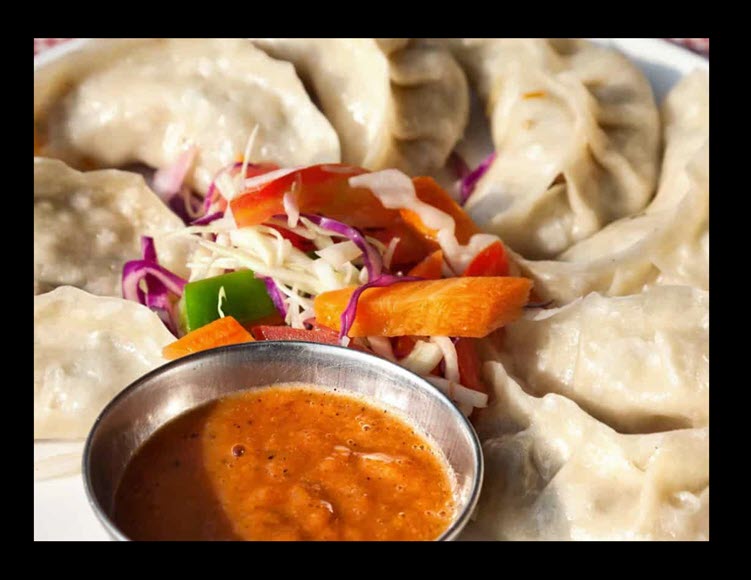
Momos or Momo
Momo is a popular street food tasty snack in Bhutan and the entire Himalayan region. These are dumplings that can be found in the streets and eateries. Though considered to be a street food, there are other local restaurant ( even fancy restaurants) you can find Momo on their menu.
Similar to other Chinese dumplings variety that are also steamed, but there are some dumplings that are also fried.
Dumplings are stuffed with delicious vegetables and other fillings. The most common fillings for Momos dumplings are meats such as minced beef or pork, vegetables such as cabbage. Bhutanese cheese that is often mixed with different spices.
Momos are usually served and eaten with Bhutanese chili sauce called Ezay. It is a dipping sauce for your Momos.
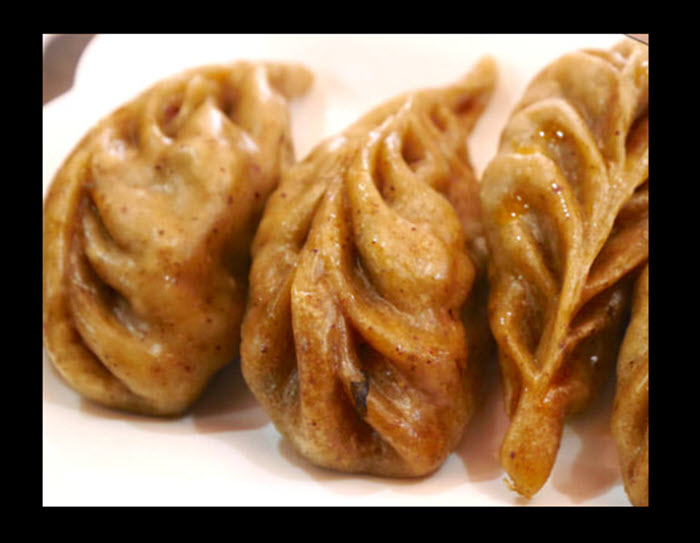
Hoentay
As mentioned, dumplings can either be steamed or fried. Fried Bhutanese dumplings are also called Hoentay. Hoentay originates from the Haa Valley located in Bhutan region.
Hoentay is similar to Momos, since both are dumplings. But the only difference between the two is that Hoentay is made using buckwheat dough wrappers.
Other ingredients used to fill the wrappers to make Hoentay includes turnip leaves, cheese and spinach.
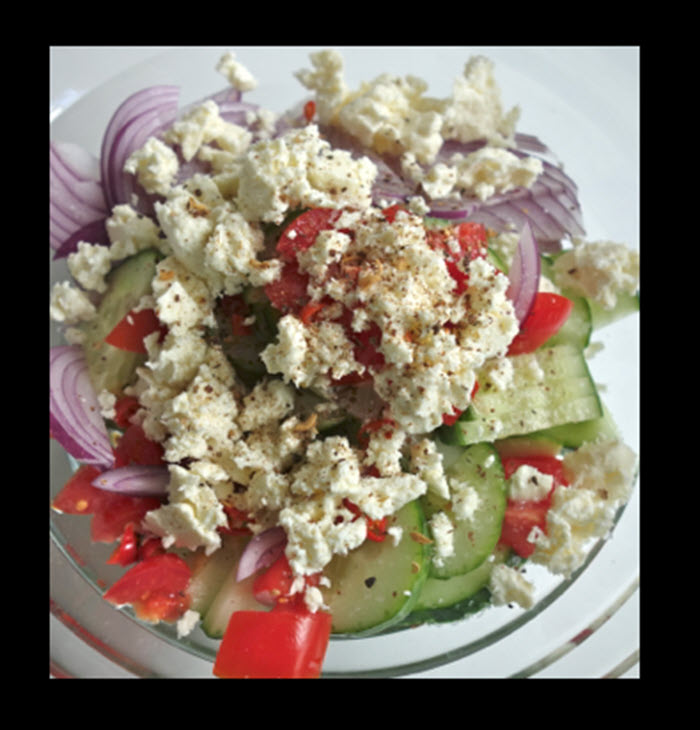
Geon Hogay
Another traditional Bhutanese dishes is what is known as Goen Hogay. It is a cucumber salad that is made of cucumber (of course, its main ingredient). Additional ingredients are mixed to the cucumber such as chili flakes, cilantro, onions, tomato, Sichuan pepper and Datshi Yak cheese.
A salad that is considered to be heavy in meat and melted cheese.
FAQs
A Bhutanese butter tea is also known as Suja. It is made with using tea leaves that are churned with salt and butter, though you can always adjust the butter to make it less salty.
The most common and most popular vegetarian dish is what is known as Zow Shungo. Bhutanese people does not want vegetables to go into waste, that is why Zow Shungo dish was created. It is a delicious dish that is made of leftover vegetables then mixed with red rice.
Bhutanese food is traditionally served and are eaten on wooden bowls, in fact up to present local homes and local restaurants in Bhutan still serve their food on Wooden bowls.
Puffed rice in Bhutan is also known as Zaow. The crunchiness is similar to that of an un-popped popcorn. This Bhutanese snack is best paired with Bhutanese tea (milk tea or Butter tea)
Bhutanese Vegetable soup or also called as Jaju is made from local Bhutan spinach or sometimes made from Turnip leaves. It also contains milk and butter.
Conclusion
Ema Datshi is the national dish and the most popular Bhutanese food in Bhutanese cuisine. There are many Bhutanese dishes that you can try, however the ones mentioned in this article are the most popular meat dishes only.
Although Bhutanese cuisine is not as popular as other cuisines from other countries, nevertheless, it is still packed with exciting and fresh new flavors. From the list of meat dishes mentioned, which ones have you tried and which one is your favorite? Let us know what you think.
E